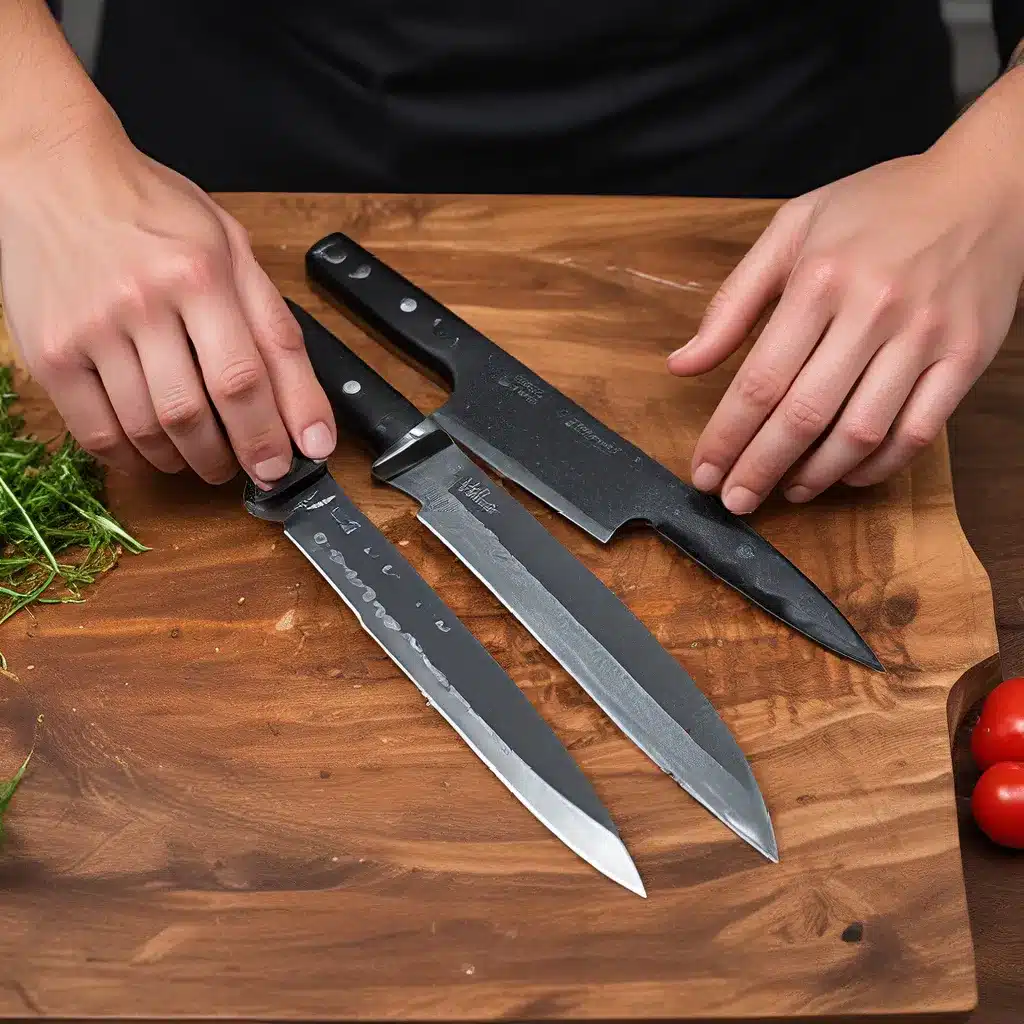
As a passionate home cook, I’ve always been fascinated by the art of wielding a knife in the kitchen. Sure, it may seem like a simple tool, but mastering advanced knife techniques can truly elevate your cooking game to new heights. That’s why I’m excited to share with you some of the insider secrets I’ve learned from my journey of honing my culinary skills.
Unlocking the Power of Proper Knife Grip
One of the most fundamental yet often overlooked aspects of knife skills is the proper grip. Many home cooks struggle with maintaining control and precision when chopping, dicing, or slicing, and it all comes down to how they’re holding the knife.
Let me tell you, the chef’s grip is where it’s at. This technique involves placing your thumb and index finger on either side of the blade, just above the handle. Your remaining fingers then wrap around the handle, providing a stable and secure hold. This grip allows for maximum control and maneuverability, making it easier to execute those intricate cuts with confidence.
But don’t just take my word for it. Knife skills classes in NYC have been teaching this method for years, helping home cooks of all levels elevate their cooking game. And let me tell you, once you get the hang of it, you’ll wonder how you ever managed without the chef’s grip.
Mastering the Art of Slicing and Dicing
Now, let’s talk about the bread and butter of knife skills: slicing and dicing. These fundamental techniques are the backbone of countless recipes, from delicate julienne cuts for stir-fries to perfectly diced onions for that mouthwatering sauté.
One trick I’ve learned is to use a rocking motion when slicing. Rather than simply pushing the knife straight down, try gently rocking the blade back and forth, keeping the tip in contact with the cutting board. This not only creates clean, even slices but also helps prevent the dreaded “accordion effect” that can happen with a straight-down motion.
And for dicing, the secret lies in aligning your cuts. Start by slicing the ingredient into even planks, then stack them and slice across to create perfect cubes. It takes a bit of practice, but once you’ve got the rhythm down, you’ll be dicing like a pro in no time.
Home Cooking New York has some great tips and tricks for perfecting these techniques, and I highly recommend checking them out if you’re serious about elevating your knife skills.
Conquering the Tricky Cuts
Now, let’s talk about some of the more advanced knife techniques that can take your cooking to the next level. One that’s particularly useful is the julienne cut, where you slice ingredients into long, thin matchsticks. This is a game-changer for stir-fries, salads, and even garnishes.
The key here is to use a sharp, high-quality knife and maintain a steady, consistent slicing motion. Start by cutting the ingredient into thin planks, then stack them and slice lengthwise to create those perfect little strips. It takes some practice, but the results are so worth it.
Another advanced technique that’s worth mastering is the chiffonade, which involves finely shredding leafy greens like basil or spinach. This is a great way to add a delicate, almost lace-like texture to your dishes. The trick is to stack the leaves, roll them up tightly, and then slice across the roll in thin, uniform strips.
And let’s not forget about the dice with a twist, where you take that classic dicing technique and add a little extra flair. Try cutting your ingredients on the bias for a more visually interesting shape, or experiment with different sizes and shapes to add complexity to your dishes.
Master essential culinary skills with comprehensive cooking classes that cover these advanced knife techniques and more. Trust me, once you start incorporating these skills into your cooking, you’ll never look at a knife the same way again.
Staying Sharp and Safe
Of course, no discussion of advanced knife skills would be complete without a nod to knife maintenance and safety. After all, a dull knife is not only more challenging to use, but it can also be downright dangerous.
That’s why it’s so important to keep your knives sharp with regular honing and sharpening. I like to use a high-quality honing steel to maintain the edge between sharpening sessions, and I make sure to send my blades off to a professional sharpener every few months. It’s a small investment that pays off in spades when it comes to effortless, precise cutting.
And when it comes to safety, the most important thing is to always keep your eyes on the blade. Never try to catch a falling knife, and be mindful of your fingers at all times. It’s also a good idea to invest in a sturdy cutting board that won’t slip around on your countertop, and to use proper hand positioning to keep your digits out of harm’s way.
Remember, knife skills are all about practice, patience, and precision. But with the right techniques and a bit of dedication, you can become a true master in the kitchen. And who knows, maybe you’ll even impress your friends and family with your newfound culinary prowess.
So, what are you waiting for? It’s time to elevate your cooking game and unleash the full potential of your knife skills!


